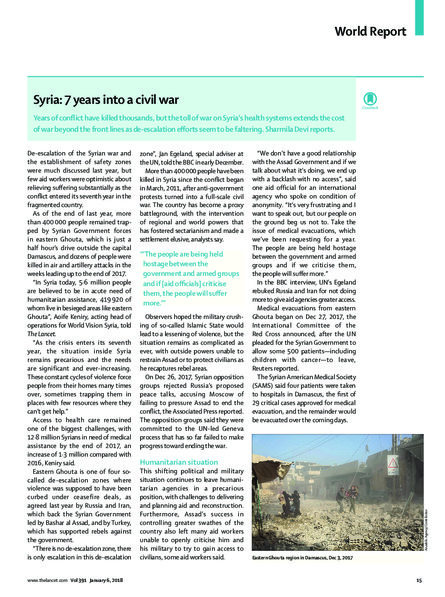
Years of conflict have killed thousands, but the toll of war on Syria's health systems extends the cost of war beyond the front lines as de-escalation efforts seem to be faltering. Sharmila Devi reports.
De-escalation of the Syrian war and the establishment of safety zones were much discussed last year, but few aid workers were optimistic about relieving suffering substantially as the conflict entered its seventh year in the fragmented country.
As of the end of last year, more than 400 000 people remained trapped by Syrian Government forces in eastern Ghouta, which is just a half hour's drive outside the capital Damascus, and dozens of people were killed in air and artillery attacks in the weeks leading up to the end of 2017.
“In Syria today, 5·6 million people are believed to be in acute need of humanitarian assistance, 419 920 of whom live in besieged areas like eastern Ghouta”, Aoife Keniry, acting head of operations for World Vision Syria, told The Lancet.
“As the crisis enters its seventh year, the situation inside Syria remains precarious and the needs are significant and ever-increasing. These constant cycles of violence force people from their homes many times over, sometimes trapping them in places with few resources where they can't get help.”